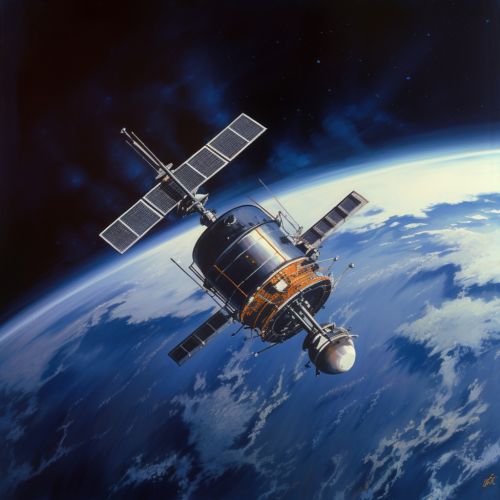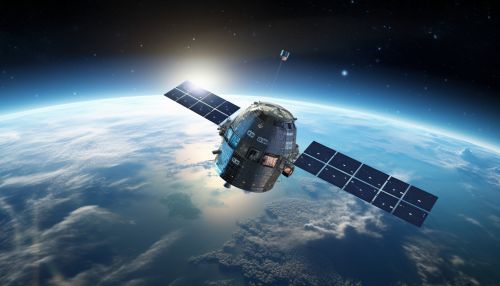Navigation satellite
Overview
A navigation satellite is a type of artificial satellite that is specifically designed to provide navigational data to various users on Earth. These satellites form an integral part of global navigation satellite systems (GNSS) such as the Global Positioning System (GPS), GLONASS, Galileo, and BeiDou.


History and Development
The concept of navigation satellites has its roots in the early 20th century, but it was not until the advent of space exploration in the mid-20th century that the idea became a reality. The first navigation satellite, Transit, was launched by the United States in 1960. This system, also known as NAVSAT or NNSS, was used primarily by the U.S. Navy to update the inertial navigation systems on Polaris submarines.


Function and Operation
Navigation satellites operate by transmitting radio signals to receivers on the ground. These signals contain information about the satellite's location and the time the signal was transmitted. By receiving signals from multiple satellites, a receiver can calculate its own position on Earth. This process is known as trilateration.


There are currently four operational GNSS: GPS (United States), GLONASS (Russia), Galileo (European Union), and BeiDou (China). Each system has its own set of satellites and ground stations, and they operate independently of each other. However, many modern GNSS receivers are capable of receiving signals from multiple systems, which can improve accuracy and reliability.


GPS
The Global Positioning System is the most widely used GNSS. It was developed by the U.S. Department of Defense and became fully operational in 1995. As of 2020, GPS consists of 31 operational satellites.
GLONASS
GLONASS is Russia's GNSS, and it became fully operational in 1995. As of 2020, GLONASS consists of 24 operational satellites.
Galileo
Galileo is the European Union's GNSS, and it became fully operational in 2016. As of 2020, Galileo consists of 26 operational satellites.
BeiDou
BeiDou is China's GNSS, and it became fully operational in 2020. As of 2020, BeiDou consists of 35 operational satellites.
Applications
Navigation satellites have a wide range of applications, from personal navigation devices and smartphones to aviation, maritime, and military uses. They are also used in scientific research, such as studying the Earth's atmosphere and climate.


Future Developments
Future developments in navigation satellites may include improvements in accuracy, reliability, and resistance to interference. There is also interest in developing new GNSS, such as India's Indian Regional Navigation Satellite System (IRNSS) and Japan's Quasi-Zenith Satellite System (QZSS).


